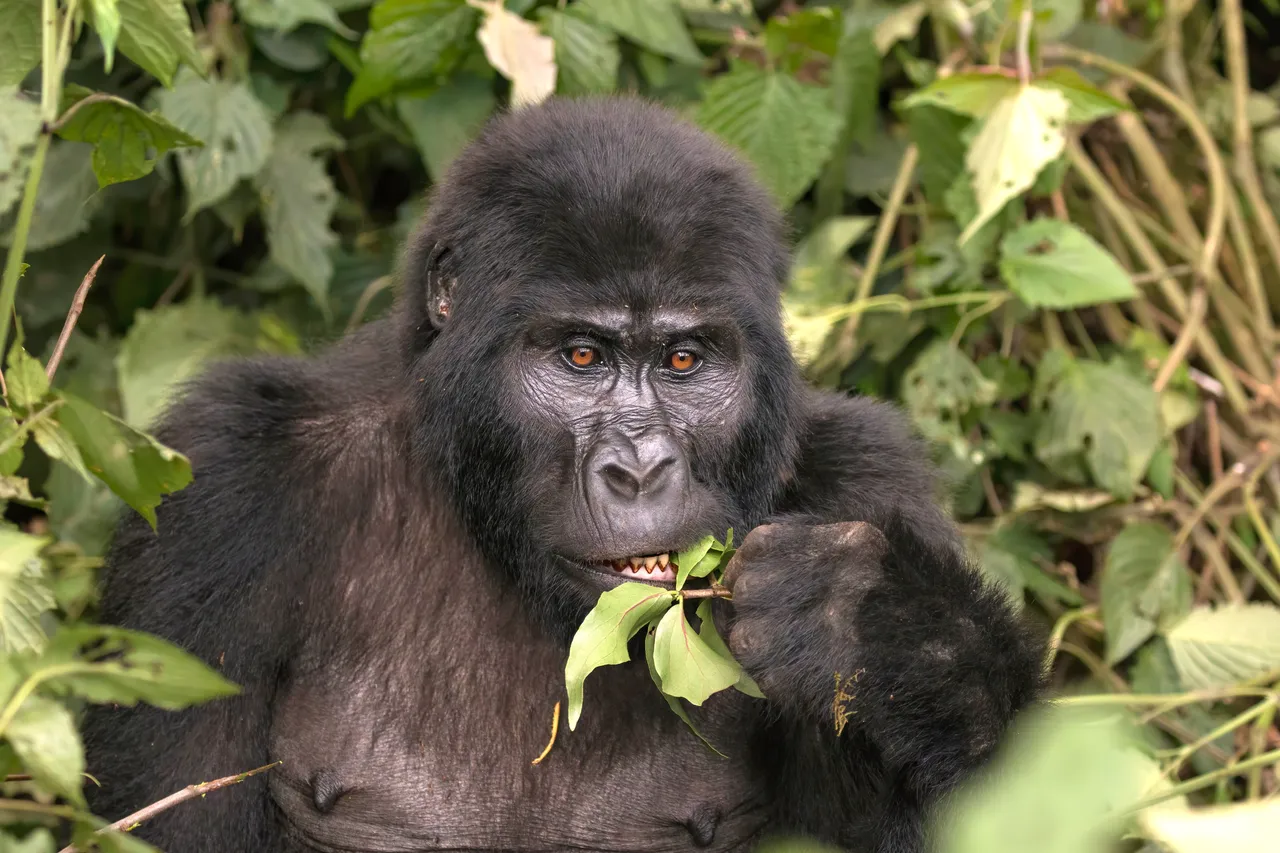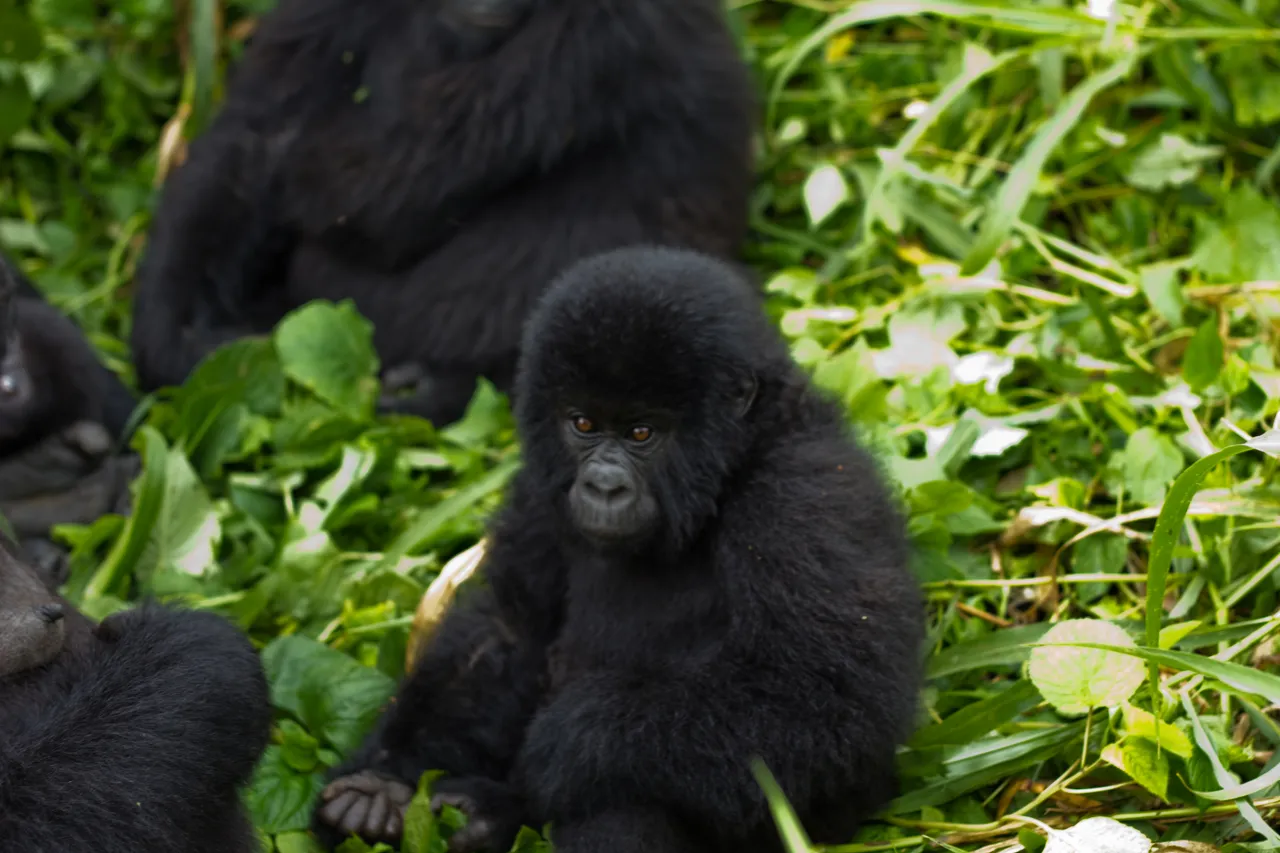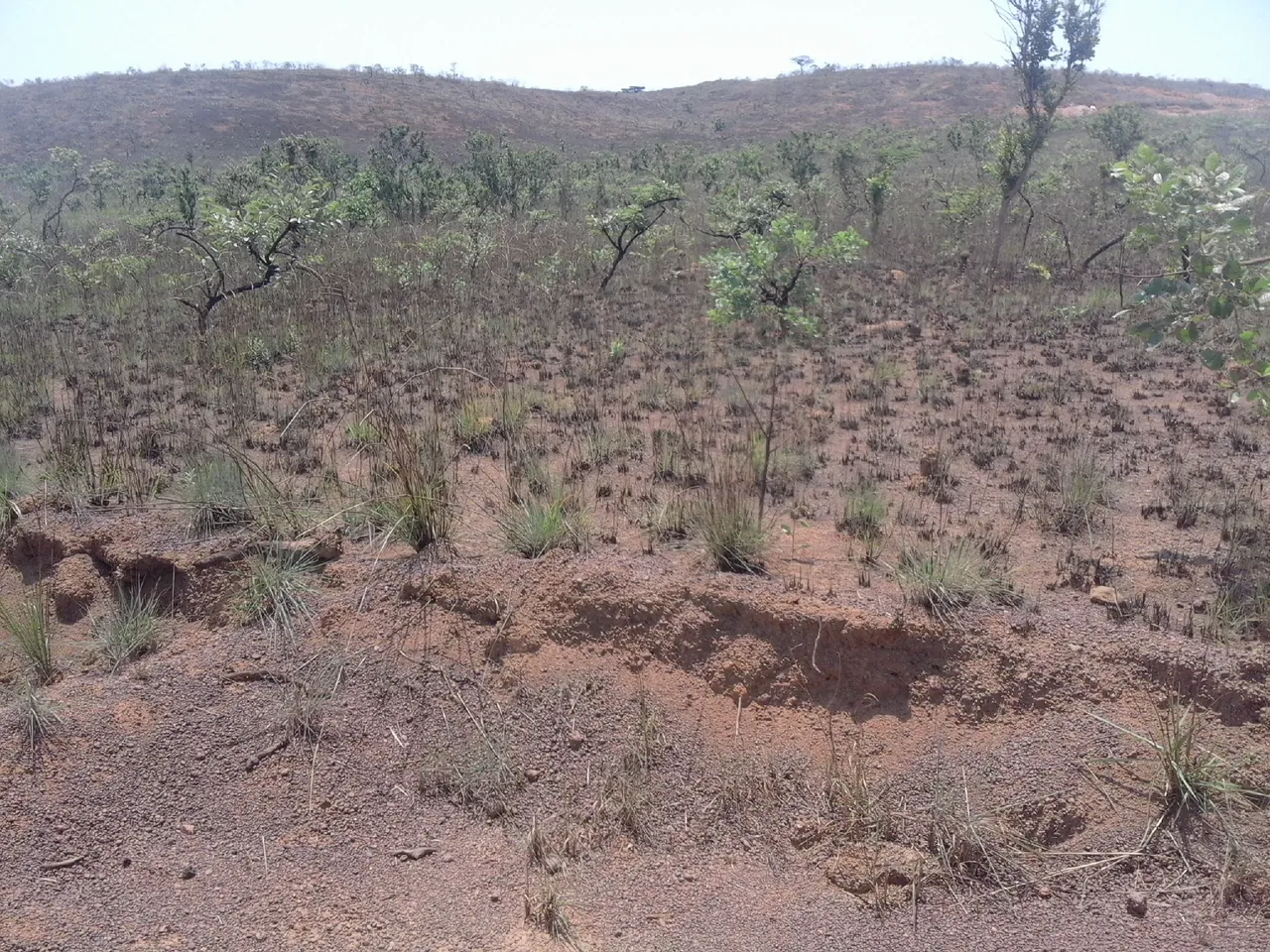I’m sure all of you are already familiar with the eastern gorillas (Gorilla beringei), but what most people don’t realize is just how few of them there are left. This great ape has two distinct subspecies; the Eastern lowland gorilla (G. beringei graueri) and the mountain gorilla (G. beringei beringei). There are only a few differences between the two subspecies, and the main one is where they prefer to live. I will let you take a look at their names and figure that out for yourself though.

A female mountain gorilla eating a leaf. Image by Charles J Sharp, posted with the Creative Commons Attribution-Share Alike 4.0 International license.
In this post we're going to be taking a closer look at the mountain gorilla, the subspecies of Eastern gorilla that is by far the most threatened, and is considered Critically Endangered by the IUCN Red List. This pretty much means that it has a very high chance of going extinct in the near future, and needs conservation efforts to survive.
The mountain gorilla is only found in two different places in Africa, with each area having a distinct population. One of these are in Bwindi Impenetrable National Park in Uganda, and is the home to an estimated 400 mountain gorillas. The other mountain gorillas live in Virunga National Part, a transbordering massif that is located in parts of the Democratic Republic of Congo, Rwanda, and Uganda. A recent consensus in this Virunga massif showed that there were a total of 604 mountain gorillas in this area, pushing the total population of all mountain gorillas just over 1,000 individuals for the first time in several decades.
Population trends in the mountain gorillas
It does feel pretty strange to celebrate that there are just over a thousand mountain gorillas left in the wild, but this is a great number compared to how it has been. Back in 1981, surveys showed that there was only around 250 gorillas in the Virunga population, and since there has historically been less gorillas in the Bwindi population, we can assume that there was less than 500 mountain gorillas left. This is a terrible number for any species, and it might not have been able to survive any lower numbers.
Luckily the trend reversed, and we are currently seeing a (small) population increase. The increase is pretty slow, and in Virunga it has been measured to be an average growth rate of 3.7% per annum. Despite being a rather slow increase, it’s not lower than expected due to the fact that gorillas are typical k-selected organisms, meaning that they will have few offspring that they take care off for a long time.

A young mountain gorilla in Virunga. Image by Cai Tjeenk Willink, posted with the Creative Commons Attribution-Share Alike 3.0 Unported license.
How the mountain gorillas ended up in such a bad spot
At this point it seems like the mountain gorillas are getting to a better place, but they are still far away from being out of the danger zone of potential extinction. To understand the potential problems the gorillas face, we will be looking back at what caused their endangerment in the first place, and see which of the problems that still persists.
1) Poaching
You might not think of the mountain gorilla as a typical animal that gets poached, but this is in fact a huge threat to them. While the grown gorillas themselves rarely gets poached for their meat, head (as a trophy), or skin, they do often end up in traps that have been put out there to hunt other animal, so they are really a by-catch of people who trap animals for food. The biggest problem is snares, and while park rangers are trained to look for and destroy these, finding all of them has proven very difficult.
Young gorillas are much more valuable to poachers, and these will sometimes get directly poached. In contrast to other African animals such as elephants or rhinos, they are not killed for their organs or products, but rather caught alive to be sold to collectors and private zoos. Infant gorillas are particularly wanted, so the park rangers focus extra effort into protecting these.
In total, the poaching is a big threat, but not the only one that matter. Most grown gorillas are pretty safe from poachers, unless they are guarding the infants that get poached. However, all mountain gorillas live inside national parks, so poaching is obviously a whole lot more difficult now that there are rangers that protect them.
2) Disease
Disease has actually been a big threat for the mountain gorillas in the last few decades, and again we humans are to blame. The problem is that the mountain gorillas get sick after being in contact with tourists that get a little too close. There are laws within the parks that tell people to be at least 7 meters away from the gorillas at all times, but these obviously gets broken by tourists who want to get a great photo of them.
The gorillas are also occasionally in contact with cattle and other farm animals, which has also shown to be transmitting disease to the gorillas.
The best solution is to limit the tourism to the parks, but this will also have negative consequences, since the parks and conservation groups then will get less money to spend on their projects.
3) Habitat loss and habitat fragmentation
Like most other endangered animals, the mountain gorillas are also affected by habitat loss and habitat fragmentation. Basically their original habitat range has shrunk after humans began to occupy more area in the last century, so they are now confined to areas that are rather small compared to their historical range.
Keep in mind that their habitat is not only directly lost because of people who settle down there; it’s also lost because of the use of “slash and burn” agriculture that provides farmers with fertile soil by burning down the forest, then abandoning it after a few years once the soil has used all its nutrients. This has created a lot of barren land that were previously dense jungle, and this is obviously unusable by the mountain gorillas, or any other animals that live in the forest.

The aftermath of a “slash and burn” farm in Kimpese, Democratic Republic of Congo. Image by Max.kit, posted with the Creative Commons Attribution-Share Alike 4.0 International license.
Habitat fragmentation if the effect of human interaction creating isolated populations of the mountain gorillas, because the gorillas will rarely travel across a human settlement or a big farm areas to reach other gorillas populations. The result of this is that there is less migration between the different populations, and each population will be isolated from each other. Over this this will reduce the genetic diversity, and give the different populations less potential to adapt to environmental changes.
While loss of genetic diversity can be a huge problem, the immediate danger of habitat loss is considered to be a bigger threat that could potentially lead to their extinction in the near future.
4) War and civil unrest
Neither Rwanda, Uganda, or the Democratic Republic of Congo are the most politically stable countries in the world, and this has certainly had a very negative effect on the mountain gorilla population. The wars had both had a direct effect with gorillas being killed for meat, killed by rebel groups for fun, or being killed by land mines, or indirect effects that comes from the lack of stable governments that could coordinate a conservation effort.
During time of war in these countries, gorilla habitat has typically been lost when refugees escaped from armed forces and sought shelter in the woods. Not only was there a direct conflict, the refugees would also cut down a lot of wood to create firewood and basic structures. I’m in no way judging refugees, but it’s still an important part of what lead to the decline of mountain gorilla population.
Will there be a future for mountain gorillas?
As you have seen, there are lots of different threats to the mountain gorillas, but despite this the populations has seen a rise in the last few decades. Right now the issues with habitat loss and disease from humans seem to be the biggest threats that could potentially drive the species to extinction, so we can hope that there will be stricter regulations for this in the future.
There are many different conservation groups that work on protection the mountain gorillas, so it’s not a lack of people who try. If things keep going in this direction we might be able to get a healthy population in the next three or four decades, but it will require a lot of money and effort.
Thanks for reading
Thanks for reading my post about the mountain gorilla, its threats, and the news that it has finally got a population that is over 1,000 individuals. I hope you enjoyed it, and please leave a comment with your thoughts below!
The sources for the threats to the mountain gorillas are from various conservation groups such as WWF’s profile for the mountain gorillas, the International Gorilla Conservation Programme, and the Virunga National Park’s website. The other sources have been made as clickable links directly in the text where they are relevant.
About @valth
Hey, I'm @valth - the author of this post. I love to write about nature, biology, animals, nature conservation, ecology and other related branches of science, and I occasionally write about my life, about Steem or about random stuff as well. I'm trying my best to write at least one post every day, so make sure to give me a follow if you enjoy my content and want to see more of it.
Join the @valth community!
I love nothing more than to engage with my readers, so please join the @valth community in the comment section. You will definitely find more information about the topic, personal experiences, questions, and even opposing views down there, so don't miss out on learning more.
I always reward users who post good comments, so please take the opportunity to share your views and get a small upvote in exchange for it.